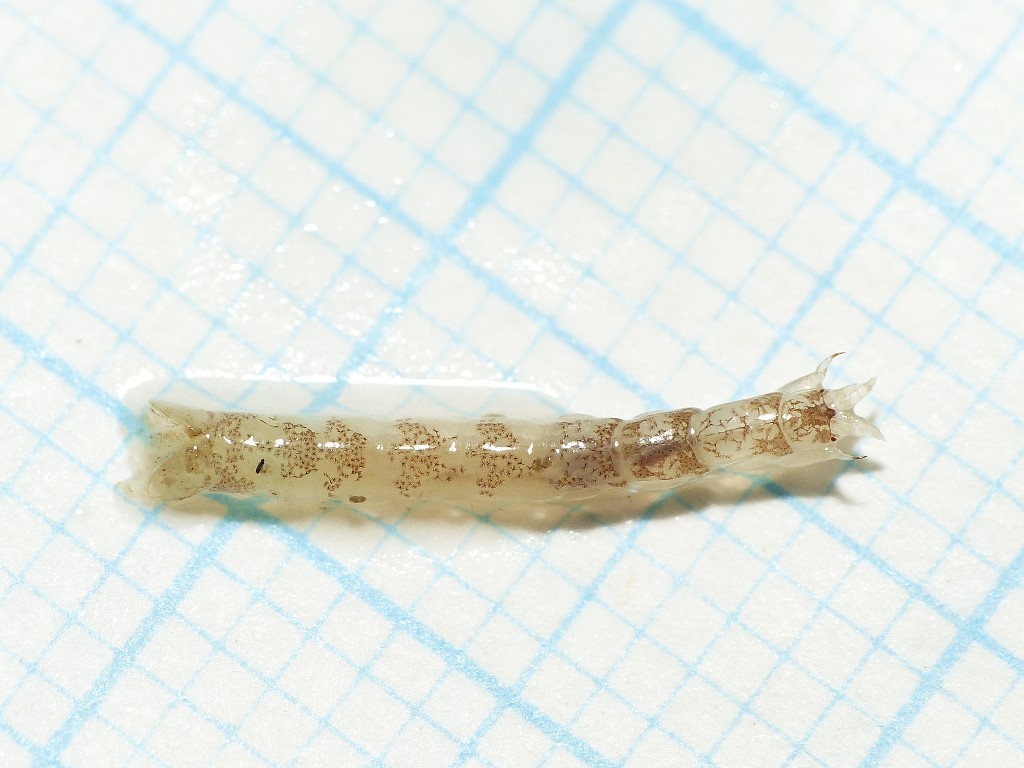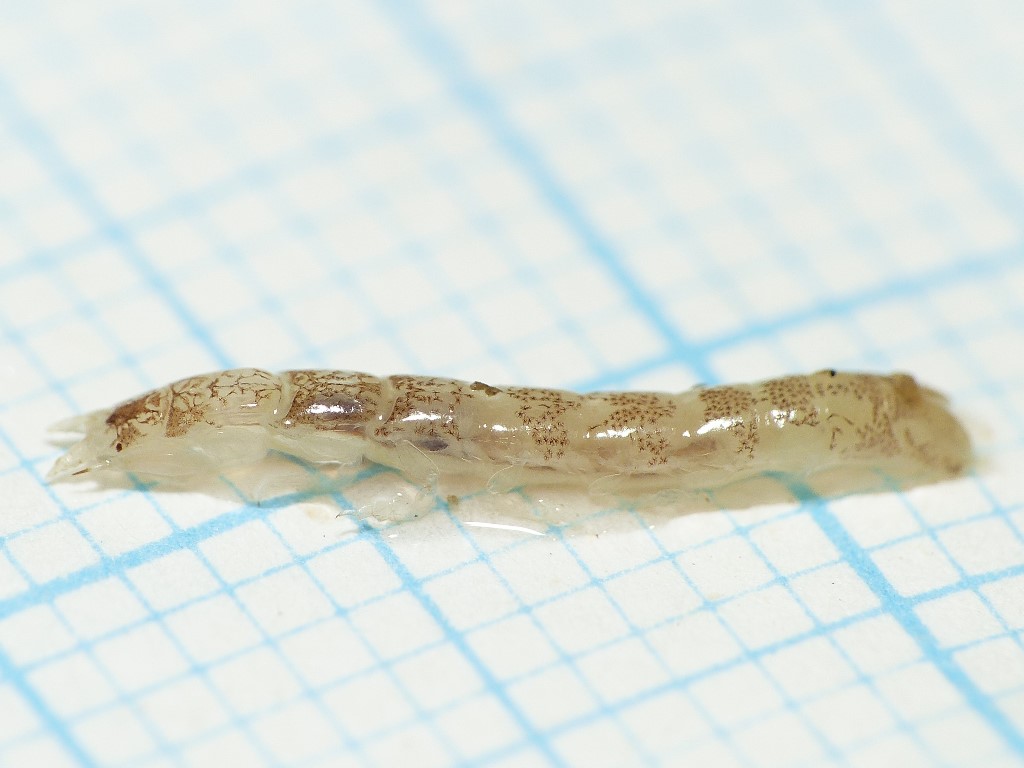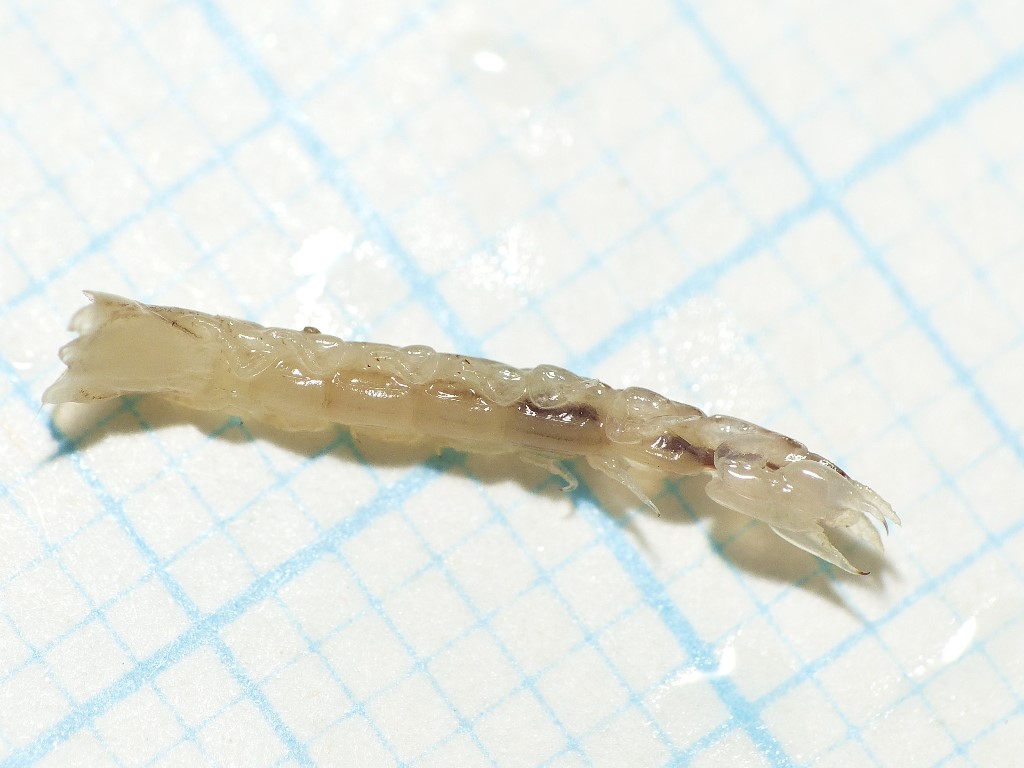Diptera.info :: Identification queries :: Other insects, spiders, etc.
|
No Idea. Sediment dwelling animal (NL)
|
|
| blaauw7 |
Posted on 28-10-2016 12:48
|
|
Member Location: Wageningen, Netherlands Posts: 2566 Joined: 22.09.07 |
Found on the sediment of a lake in the middle of the Netherlands. I have no idea? Gr Dick blaauw7 attached the following image:  [144.75Kb] |
|
|
|
| blaauw7 |
Posted on 28-10-2016 12:49
|
|
Member Location: Wageningen, Netherlands Posts: 2566 Joined: 22.09.07 |
2
blaauw7 attached the following image:  [119.59Kb] |
|
|
|
| blaauw7 |
Posted on 28-10-2016 12:49
|
|
Member Location: Wageningen, Netherlands Posts: 2566 Joined: 22.09.07 |
3
blaauw7 attached the following image:  [109.92Kb] |
|
|
|
| blaauw7 |
Posted on 28-10-2016 12:50
|
|
Member Location: Wageningen, Netherlands Posts: 2566 Joined: 22.09.07 |
4
blaauw7 attached the following image:  [124.87Kb] |
|
|
|
| John Carr |
Posted on 28-10-2016 14:03
|
|
Super Administrator Location: Colorado, USA Posts: 10553 Joined: 22.10.10 |
Not Diptera because it has jointed legs. Soem other holometabolous insect larva. |
| atylotus |
Posted on 28-10-2016 15:21
|
|
Member Location: Amsterdam, NL Posts: 1172 Joined: 29.05.09 |
A crustacean Isopod: Cyathura carinata, a common brackish water inhabitant. probably collected near the outflow of the North Sea canal near Amsterdam? Ton van Haaren Amsterdam Edited by atylotus on 28-10-2016 15:22 |
|
|
|
| John Carr |
Posted on 28-10-2016 16:29
|
|
Super Administrator Location: Colorado, USA Posts: 10553 Joined: 22.10.10 |
atylotus wrote: A crustacean Isopod: Cyathura carinata, a common brackish water inhabitant. probably collected near the outflow of the North Sea canal near Amsterdam? Ton van Haaren Amsterdam At least I got the right phylum. What should I look for to identify this as an isopod? |
| blaauw7 |
Posted on 30-10-2016 12:27
|
|
Member Location: Wageningen, Netherlands Posts: 2566 Joined: 22.09.07 |
Thanks! Found in the Markermeer near Amsterdam! Gr Dick |
|
|
|
| atylotus |
Posted on 30-10-2016 17:00
|
|
Member Location: Amsterdam, NL Posts: 1172 Joined: 29.05.09 |
Well. telling why this is an Isopod is even more difficult than telling what species this is. I just recognize the species just by its habitus. I have seen this one over a hundred times. It is a crustacean for it has two pairs of antenna unlike any other invertebrate. This is hard to see on the photos because they are positioned dorsally and ventrally so the ventral ones are hard to spot. But I cannot tell you why this is an Isopod. |
|
|
|
| Tony Irwin |
Posted on 30-10-2016 21:32
|
|
Member Location: Norwich, England Posts: 7327 Joined: 19.11.04 |
Iso (=equal) poda (=foot). The legs on this creature are all very similar, unlike those of the Amphipoda (sandhoppers, etc). There are other orders of crustaceans which can be similar (e.g. Tanaids),but they tend to be smaller. The chromatophores (star-shaped pigment cells visible through the cuticle) are typically found in marine isopods, as well as in the evidently different smaller decapods (prawns, etc), but as Atylotus says, recognising the species is the easiest way of placing these creatures in the right Phylum, Class and Order.
Tony ---------- Tony Irwin |
|
|
|
| Jump to Forum: |













